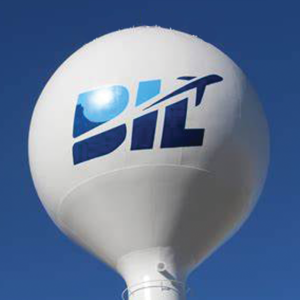By Evelyn Pyburn
While many aspects of updating and expanding the Billings airport have been completed, there are more to come. Most of them are essential to attracting and retaining airline companies in the Billings market, according to Jeff Roach, Airport Director at Logan International Field in Billings.
Roach was one of several speakers at a special event featuring the Billings Air Service Committee hosted by the Billings Chamber of Commerce. Also presenting was Trina Froehlch of Mead & Hunt, of Eugene, Oregon. She gave one reason for the question that is commonly asked by people in Billings, which is why does Bozeman have more and less expensive flights than Billings? She explained that following COVID, business travel did not bounce back the way leisure travel has, which has encouraged airlines to invest more in leisure travel than business travel. Given that Bozeman has far more leisure travelers while Billings has always had a stronger business community, Bozeman has been more attractive for airline investment.
She added, “Billings and Bozeman are very different markets.”
But that doesn’t mean there aren’t opportunities for Billings to expand its service. One way is to use Billings’ air service, even if it is a bit more expensive, advised Billings Chamber CEO John Brewer. The more travelers there are using Billings’ service the more attractive it appears as a good market to the airline carriers. The difference in cost per ticket isn’t that great – currently on average 13 percent per ticket. While that can amount to a lot for a family, Brewer is just saying….
The number of potential passengers is paramount for airlines in making their decision about where to bring service. Increasingly, they are operating larger aircraft with more seating because operating smaller planes is too expensive. They need to fill seats – typically from 60-70 – in each airplane.
Froehlch identified four areas of costs that are plaguing airline companies – high fuel costs, labor shortages, a decline in demand, and a shortage of aircraft. But their Number 1 problem is a shortage of pilots. “It is really acute.”
There are a number of things that Billings airport has to do in order to bring in new carriers and expand service – “things that weren’t priorities before.” Some $60 million in upgrades have been identified.
Airline companies do not want to unload passengers on the ground. Billings Airport is doubling their number of gates. They have completed four and planning to add four more by April 1. They have only one ground loading area.
This spring they will begin building access roads to business centers within Logan Field.
They are going to realign the road on the west end of the airport which will allow for the expansion of a ramp that allows for a fifth air cargo pad.
“Every year into the future we have projects planned,” said Roach. The projects are prioritized and set forth in a master plan, but Roach noted that their existing master plan is 12 years old and needs to be updated. They updating could take up to two years.
Developing a 20- year master plan will take “robust public involvement,” said Roach.
Parking is one of the critical issues. “Do we stay on the ground or do we go vertical?” questioned Roach. Security improvements is another issue. “Our baggage claim no longer meets security requirements,” he said. There are other security issues to be addressed. Changes are also necessary in the area of bag screening and ticket counters.
Roach hinted that another fixed based operator is coming to Billings, a business similar to Edwards Jet Center.
There has been expansion in Billings’ air service.
The City of Billings, in partnership with the Tourism Business Improvement District (TBID), the Billings Chamber of Commerce, and Big Sky Economic Development has been awarded a $1,000,000 Small Community Air Service Development Program (SCASD) grant by the United States Department of Transportation to recruit, initiate, and support new air service between Billings and one of two California hubs—San Francisco or Los Angeles.
Brewer pointed out that Southern California was identified as one of the top destinations in the country and Billings has no direct service to California. The Billings community must fulfill a match commitment to get the grant, which they are working on doing, according to Ashley Kavanagh, Senior Director of Recruitment and Community Development at Big Sky Economic Development. Local citizens and businesses were urged to contribute.
Another new “low-cost carrier”, Sun Country Airlines, has been announced to begin service in Billings on June 19, 2024, with nonstop flights to Minneapolis-St. Paul. A seasonal service, the flights will be run every Wednesday and Saturday, until Aug. 24, 2024.
Billing has the second most flights, but is third in seat capacity.
Companies offering air service in Billings are Alaska, Allegiant, Delta, Frontier, Jet Blue and Southwest.


